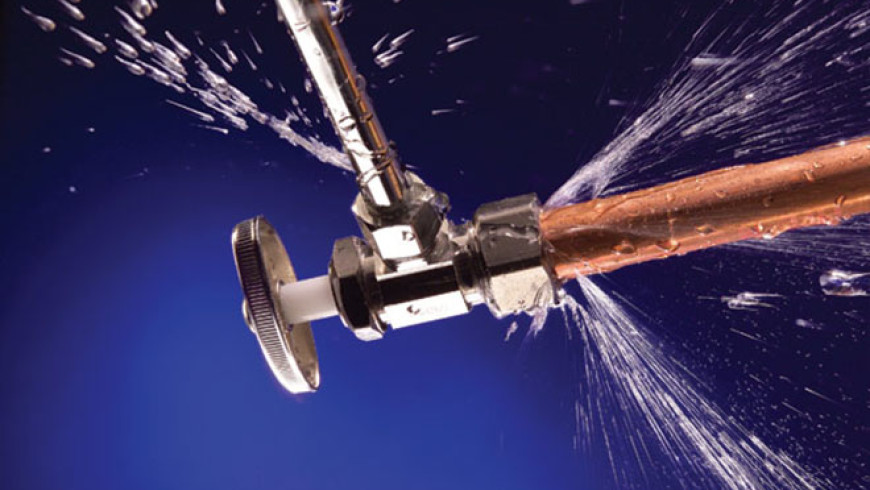This great article listed below relating to How to Find Water Leaks is incredibly stimulating. Don't overlook it.

Leakages not just cause waste of water but can additionally cause unneeded damage to your home and also promote undesirable organic growth. Sadly, water leaks might go unnoticed given that a lot of the pipework in our residence is concealed. By understanding and looking for everyday situations that create leakages, you can secure your home from future leakages as well as unnecessary damages. Today, we will check out six leakage triggers that may be creating your pipelines to trickle.
Intruding roots
The majority of water leaks begin outside your home as opposed to inside it. If you observe a sudden reduction in water stress, claim in your tap, require time to go out and also examine your lawn. You could observe damp patches or sinkholes in your backyard, which could suggest that tree roots are attacking water lines creating water to seep out. You can have your plumber look for invasion, particularly if you have trees or hedges near your residential property.
Corroded water systems
This might be the cause of discoloration or warping on your water pipes. If our plumbing system is old, think about changing the pipelines given that they are at a greater risk of corrosion than the newer models.
Faulty Pipe Joints
The point at which your pipes link is often the weakest link in the waterline. Pipe joints can degrade with time, causing water leakages. However, most of pipeline joints are not conveniently noticeable. If you have loud pipes that make ticking or banging noises, especially when the hot water is switched on, your pipe joints are probably under a lot of stress. It is suggested to have your plumber evaluate your system annually.
Immediate temperature modifications.
Severe temperature level adjustments in our pipelines can trigger them to expand and acquire suddenly. This expansion and tightening may cause splits in the pipelines, especially if the temperature are below freezing. If you maintained an eye on just how your plumbing functions, it would certainly be best. The presence of the formerly pointed out situations frequently shows a high danger.
Poor Water Connectors
Sometimes, a leak can be brought on by loose pipes as well as pipes that supply your devices. Usually, moving is what creates the loose water Connections. You could locate in the case of a washing device, a pipe may spring a leakage due to trembling during the spin cycle. In case of a water connections leakage, you may observe water running directly from the supply line or pools around your appliances.
Obstructed Drains
Clogged drains pipes could be bothersome and also inconveniencing, but they can in some cases end up causing an overflow causing break pipelines. Maintain removing any materials that might go down your drains that might obstruct them to prevent such inconveniences.
All the above are causes of leakages however not all water leaks arise from plumbing leaks; some leakages could come from roofing leaks. All leaks must be repaired instantly to stay clear of water damage.
Leaks not only trigger waste of water yet can additionally create unnecessary damage to your home as well as advertise undesirable organic growth. By looking and also recognizing for everyday circumstances that trigger leakages, you can shield your home from future leaks and unnecessary damages. Today, we will certainly look at 6 leak creates that might be causing your pipes to leak.
At times, a leakage can be created by loose hose pipes as well as pipelines that provide your home appliances. In situation of a water connections leak, you might observe water running straight from the supply line or pools around your devices.
How To Check For Water Leak In Your Home
How To Check for Leaks
The average household's leaks can account for nearly 10,000 gallons of water wasted every year and ten percent of homes have leaks that waste 90 gallons or more per day. Common types of leaks found in the home are worn toilet flappers, dripping faucets, and other leaking valves. These types of leaks are often easy to fix, requiring only a few tools and hardware that can pay for themselves in water savings. Fixing easily corrected household water leaks can save homeowners about 10 percent on their water bills.
To check for leaks in your home, you first need to determine whether you're wasting water and then identify the source of the leak. Here are some tips for finding leaks:
Take a look at your water usage during a colder month, such as January or February. If a family of four exceeds 12,000 gallons per month, there are serious leaks.
Check your water meter before and after a two-hour period when no water is being used. If the meter changes at all, you probably have a leak.
Identify toilet leaks by placing a drop of food coloring in the toilet tank. If any color shows up in the bowl after 10 minutes, you have a leak. (Be sure to flush immediately after the experiment to avoid staining the tank.)
Examine faucet gaskets and pipe fittings for any water on the outside of the pipe to check for surface leaks.
Undetected water leaks can happen without the home or business owner even realizing. If you suspect a water leak, but not able to find the source. It is time to contact a professional water leak detection service, The Leak Doctor.
How To Find a Water Leak In Your Home
https://www.leakdoctor.com/blog/How-To-Check-For-Water-Leak-In-Your-Home_AE197.html

We were shown that report about Common Water Leaks In House through someone on another web blog. Those who liked our blog entry please make sure you remember to pass it around. Many thanks for going through it.
Website